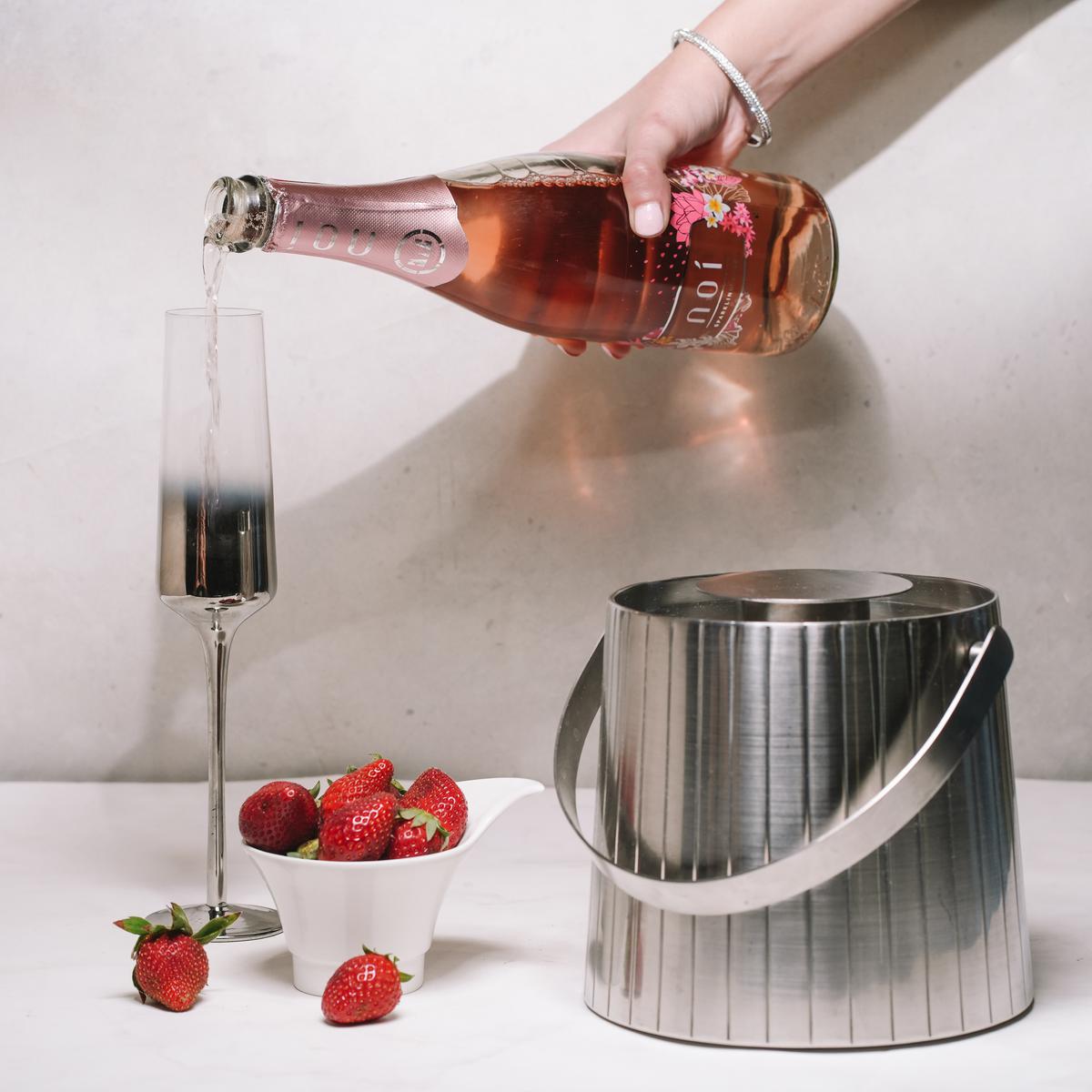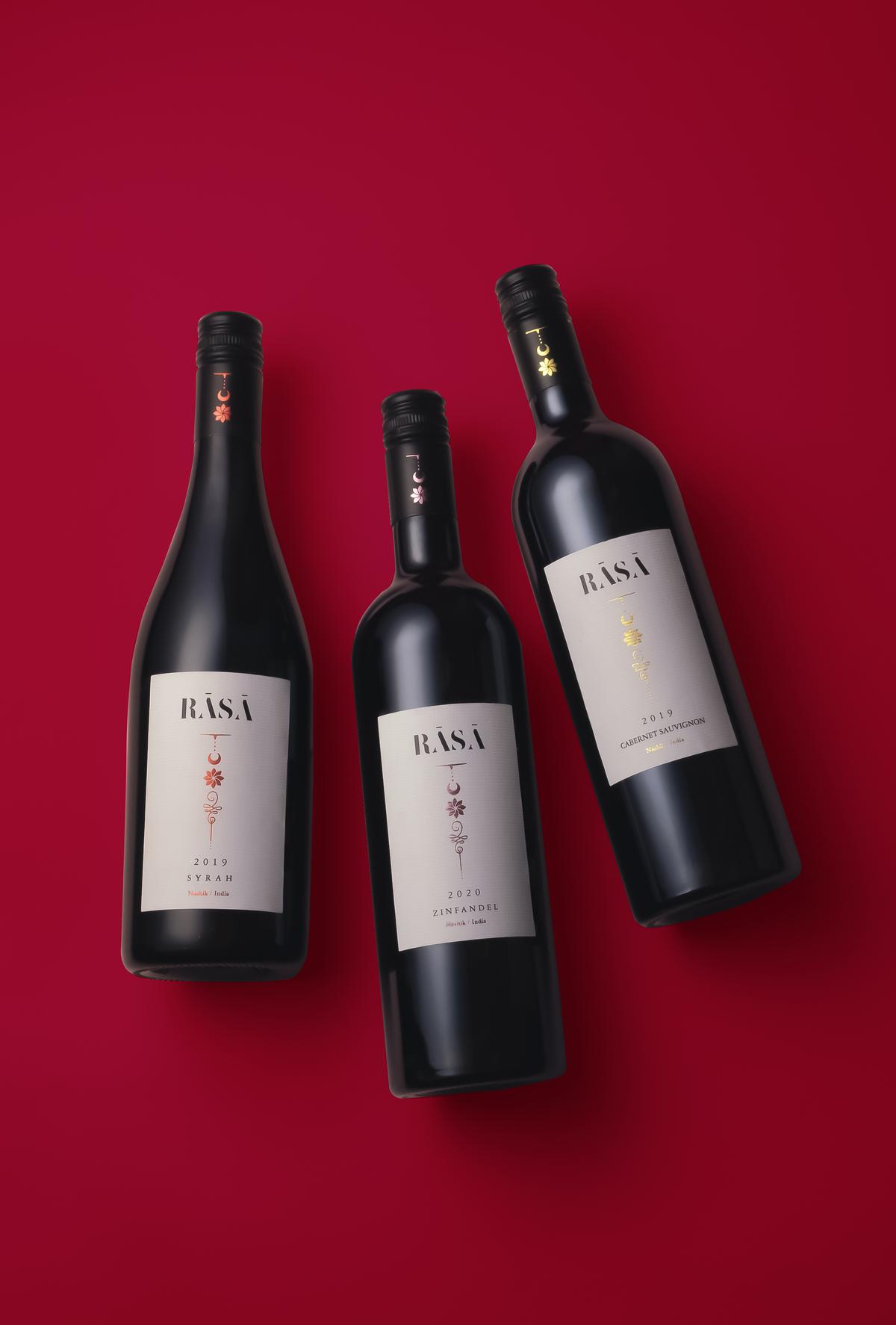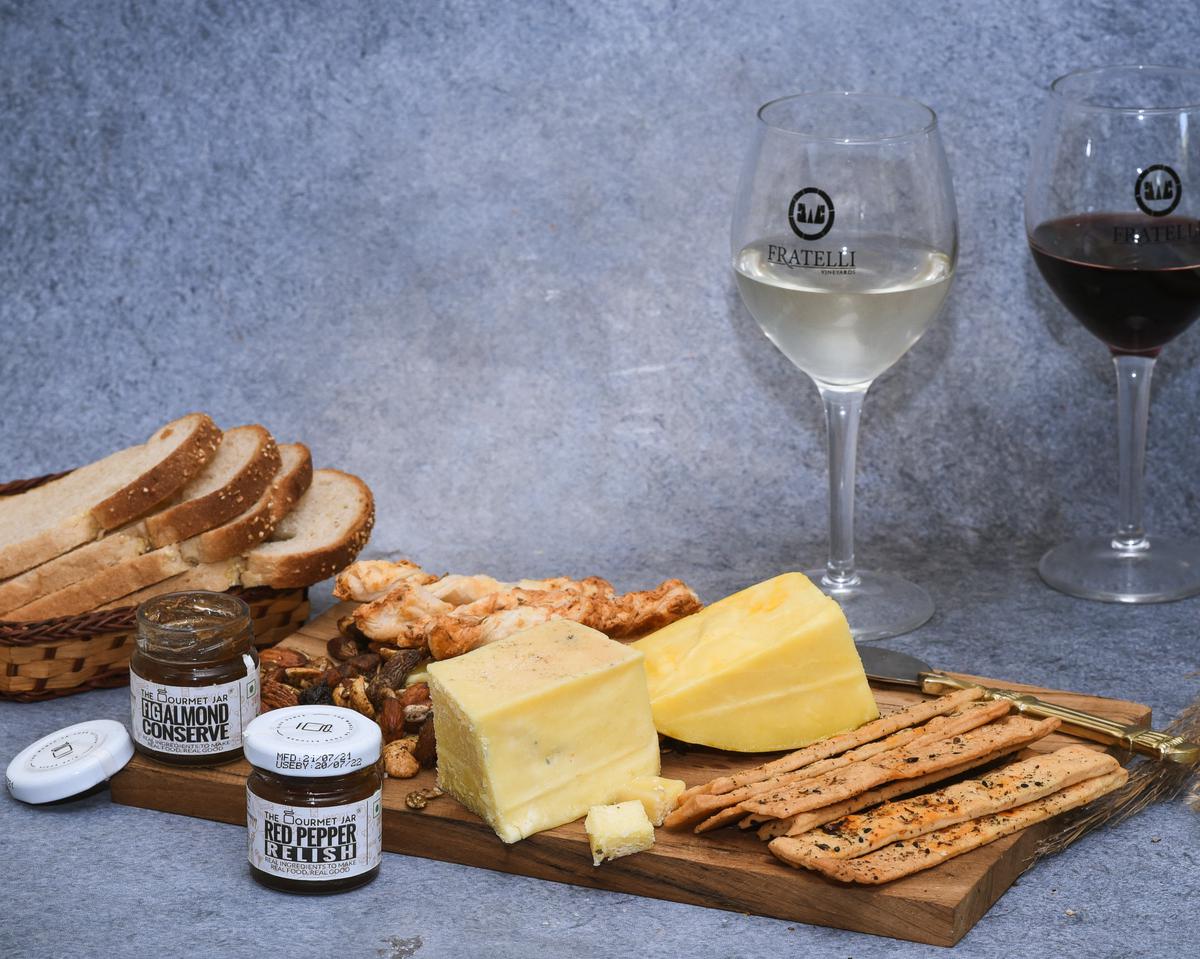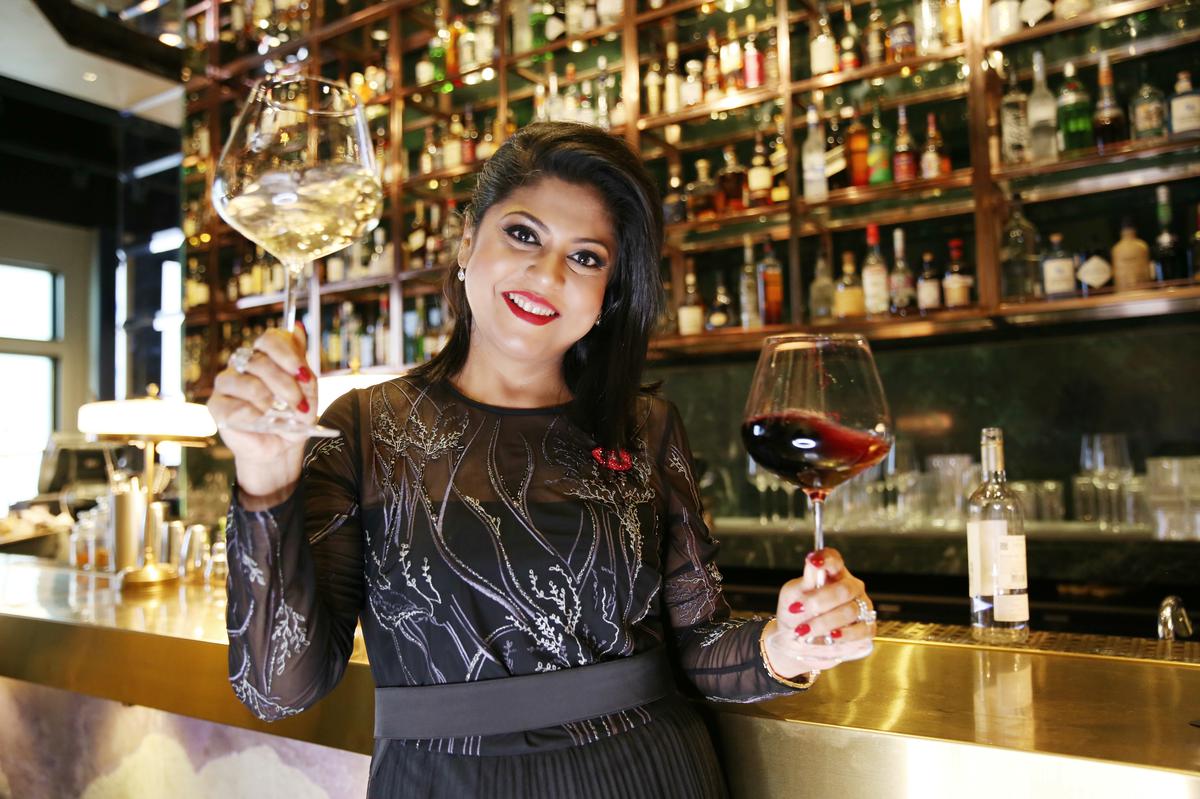The rise of India’s local wine brands and vineyards
As young Indians look approachability, affordability and sustainability in their wine choices, local brands and vineyards respond, eliminating snobbery with cans, easy drinking spritzers and Syrah rinsed cheese
As young Indians look approachability, affordability and sustainability in their wine choices, local brands and vineyards respond, eliminating snobbery with cans, easy drinking spritzers and Syrah rinsed cheese
Indian wines are coming of age, and how. Indian viticulture witnessed a resurgence during the pandemic as consumers explored wines across categories and price brackets, to drink on their couches through lockdowns and then, through last year’s bursts of home dinner parties.
As brands innovate to appeal to new consumers, with pandemic restrictions lifted across the country, wine sales have seen an uptick, which is good news for an industry that thrives on celebratory occasions. With a Rosé renaissance, a focus on sustainability and a growing base of enthusiastic consumers, the industry is expected to grow by $274 million by 2026, with a 29.3% year on year growth in 2022, according to a recent report by Technavio, a global research and advisory company. “Wine consumption via retail and at home has seen a steady increase during the last two years; currently almost 3/4 of our sales are off-trade, and only 1/4 is on-trade,” explains Chaitanya Rathi, COO, Sula Vineyards headquartered in Nashik..
Locked down with wine
At Fratelli wines, based in Akluj, Maharashtra, home delivery in the State pushed sales during 2020-21 lockdowns, but, “once stores opened, we witnessed people across the board, prefer browsing through wine selections and are back at big stores,” states Jayanth Bharathi, DGM, Marketing, Fratelli Wines. The All India Wine Producers Association, headed by Jagdish Holkar, has benefited from the rationalisation of excise taxes and duties in Maharashtra and West Bengal, but the industry wants a separate category for wine in the excise lexicon.

Noi Sparkling Rose
“Wine can be removed from the Indian Made Foreign Liquor ( IMFL) category, and giving us a separate bracket will be good for business. Currently a majority of our sales come from Delhi, Mumbai, Bengaluru and the state of Goa, but removing inter-State barriers will be key in making Chennai, Hyderabad, Kolkata and other cities big wine markets, as well,” adds Holkar.
Sonal Holland, a Master of Wine and founder of the Sonal Holland Wine Academy, which provides online courses in wine appreciation and education, is buoyant about the industry’s prospects in 2022. “Earlier, the Indian wine industry relied on international tourists to drive consumption, but that is changing. There’s a 200% jump in enrolment for wine education courses as well, among Indian consumers. Single serve wines are popular now, easy on the pocket and palate. We are also seeing an uptick in the demand for rosé, the quickest growing category in the market. Once thought to be a feminine, brunch staple, now rosé is a gender-neutral beverage of choice in its still or sparkling variant,” she says.
Fratelli Wines spent the last two years, during the pandemic, focussing on wine education within the hospitality industry in Tier-2 and Tier-3 cities. Gaurav Sekhri, MD of Fratelli Wines, says that they too have noticed rosé flying off the shelves. “First time drinkers usually start with white wines, as they’re easier on the palate, and the reds with their tannins offer a drier mouthfeel. Rosé works well with the approachability of a white, and flavour complexity of a red. Our Shiraz Rose at ₹800 and M/S Rose at ₹1,250 (Maharashtra) have been very popular.”

Gregoire Vardein- Sula
The brand’s Noi Sparkling Rosé (₹980 in Maharashtra) in a blush decorative bottle, launched early 2022, has been doing brisk business. The company’s Tilt vertical sold in single-serve cans- in its white red, bubbly, bubbly rosé, and Noi Spritzer variants are popular for all-day drinking – lighter than a bottle, and lighter on the pocket too, starting at ₹180. “Spritzers with 8% ABV (the amount of alcohol in a beverage by volume), are lighter than wines and great on their own or even as mixers with gin or vodka,” adds Sekhri.
The art of aging
Grover Zampa, one of the country’s oldest wine makers, with vineyards in Nandi Hills , Karnataka and Nashik, Maharashtra, navigated the pandemic with the launch of its Signet Collection in December 2021, a range of premium red wines aged in traditional European vessels, a first for the winemakers. Signet is India’s first wine range to be aged in foudres, amphoras (two-handled pots with a neck narrower than the body, used as decanters in ancient Greece), and concrete tanks. While the brand uses Italian steel tanks for its wine processing, the Signet range uses different earthy materials traditionally used in Europe, which interact with the wine differently, offering a unique mouthfeel and tasting notes.
Bringing wines to table during the pandemic was an uphill climb, with pandemic restrictions during the April-June harvest season in 2020, and imports of special ageing vessels being put on hold. “Wine being a living liquid, we had to be careful of the amount of time it spent in tanks and bottles, letting the sommeliers do their bit as we dealt with logistic challenges”, explains Sumit Jaiswal, AVP, Marketing and EXIM, Grover Zampa.
The Signet Spectrum is a dry red wine: a blend of Shiraz, Sangiovese, Cabernet Sauvignon, Cabernet, Franc, and Muscat grapes, all hand-picked from the brand’s vineyards, fermented and aged for 12 months in concrete egg-shaped tanks. Signet Shiraz (Amphora), has been fermented and aged for 12 months in terracotta clay amphoras. The porous structure of terracotta clay allows micro-oxygenation which helps to soften the tannins, which gives deep and rich structure, without additional flavours. Other wines under the Signet umbrella are fermented for 12 months in 2,000 litre and 1,000 litre French oak foudres( large wooden vats, popular in France’s Rhône Valley, significantly larger than typical oak barrels), the Signet Shiraz ( 24 months French Barriques) is matured in 225-litre French oak barrels for 24 months, and 12 months in bottles.
Nikhil Agarwal, sommelier and founder, All Things Nice, opines, “Indian wineries are bringing high quality, high-end wines, and the Signet is very impressive, with the kind of treatment it has received at Grover Zampa.”

Rasa by Sula
The year 2021 also witnessed the launch of Rasa from Sula Vineyards in Nashik. Sula, inspired by founder Rajeev Samant’s mother, Sulabha, was established in 1999. While Rasa has existed since 2007-08, along with the brands Dindori, The Source, and its Classics, “with Rasa in September 2021, we went with a complete revamp – from identity to winemaking. We are currently working on making the three varietals -Cabernet Sauvignon, Syrah, Zinfandel, available pan-India,” states Grégoire Verdin – Global Brand Ambassador – AVP Tastings and Marketing, Sula Wines. With a significant uptick in D2C (direct to consumer) sales, Sula Wines is upbeat about its new consumers, “A lot of Indians have re-discovered Indian wines due to the import shortage, and they understood that Indian wines are as good and quite often better than imported ones.”
While the wine lifestyle appeals to upwardly mobile, young oenophiles, brands like Fratelli are augmenting the wine experience with Asia’s first wine-inspired cheese selection, created in collaboration with Käse, an artisan cheese brand based in Chennai. The cheese made from A2 cow’s milk, is wrapped in Sangiovese vine leaves or rinsed in wine infused brine, then aged. “While we have received a fabulous reception to our first lot of wine-inspired cheeses, we are excited for the new launches,” Sekhri says. In addition to the Syrah rinsed gusto, Chenin rinsed sunburst and Sangiovese leaf aged cheddar, the recently launched barrel aged Feta and smoked provolone, are all available separately at ₹465 for 150 grams, or paired with a mango jalapeno spread and a raspberry conserve as part of morning, evening or brunch platters, available on the Fratelli website. .
Pricing pivot
India’s leading wine brands have launched a range of wines during the pandemic, varied in both treatment and price points, Agarwal is upbeat about the Indian wine industry, “The Indian wine industry has come a long way in a relatively short span of time, making some exceptional wines. While the ₹1,000-1,300 bracket does very well, there are the higher end wines like Rasa that sell closer to ₹1,800 and there is a market for that range as well.” Madhulika Bhattacharya Dhall, founder, La Cave, a boutique liquor store with branches across India concurs, “₹1,500-₹2,000 is the sweet spot for people buying wines in India, and red wine is preferred over white wine.” As Indian winemakers reach out to Tier-2, 3 and 4 cities as well, there are wines for new consumers who prefer, “more fruit forward selections like the Chenin Blanc, but drier style wines are popular as well,” concludes Agarwal.
The Indian wine industry is not only looking to increase sales via boutique liquor stores, but increasing visibility and accessibility as well. Maharashtra is the first State to allow wines to be sold in large supermarket chains. In Kolkata, one can order wines via food aggregator apps, while Odisha, Jharkhand offer home delivery of wines as well. Holkar adds, offering wines in different packaging can make it more accessible. “In Maharashtra, the AIWPA is looking to ask vineyards to sell wines in bargain boxes and growlers under five litres — those are great pocket friendly options for small parties. Allowing wines to be more accessible is great for the producers, and this being an agro-based industry, great for those working on vineyards as well.”

Fratelli- Cheese and condiment platter
| Photo Credit: PRAMEET

Sonal Holland
For all the latest Life Style News Click Here
For the latest news and updates, follow us on Google News.
